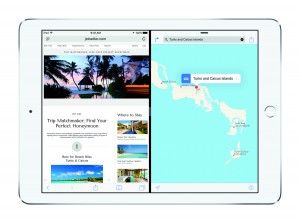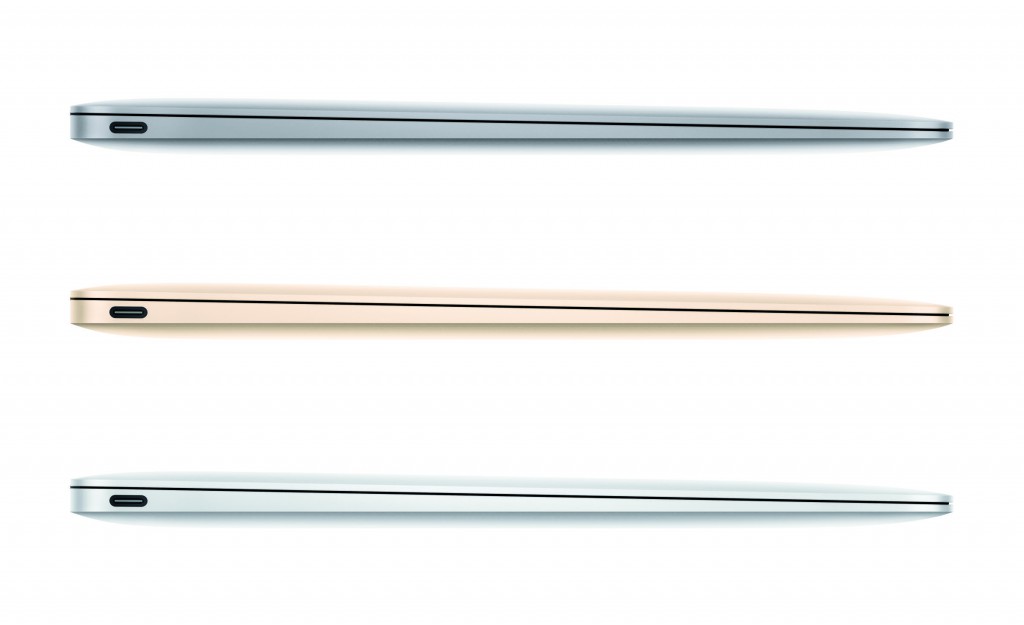The next big thing.
It’s what we are all waiting for. Well, at least most of us are. If you’re Samsung, there’s no need to wait; the “next big thing is already here.” Just kidding. Either way, the next big thing is a big deal.
Time was, Apple delivered the next big thing on a regular basis. Now, not so much. Inevitably, there are grumblings that Apple has lost its mojo and that we won’t be seeing a “next big thing” from them anytime soon — if ever. Last week’s media event added (or should I say “subtracted”?) fuel to that fire. The only two product announcements were a retro 4-inch iPhone and a downsized iPad Pro — hardly groundbreaking.
Personally, I found the smaller iPad Pro to be a compelling product: faster, brighter, louder, worthy new software features. It was certainly good enough for me to order one and dump my 3-year-old iPad Air. Still, it’s obviously not equal to the excitement surrounding the introduction of the original iPad.
This got me thinking: What exactly are the minimum requirements for a product to be justifiably labelled a “next big thing”? And when can we expect Apple to deliver the next one?
As today is the 40th anniversary of the founding of Apple (yes, April Fools day, but it’s no joke), it seemed worth pausing to reflect on this.
My definition of the “next big thing” dates back to the arrival of the original iPod in 2001.
There were already several MP3 players on the market, such as the Archos Jukebox and the Diamond Rio. As I recall, Sony (trying to capitalize on the success of its Walkman products) also had some sort of proprietary mini-disc device. Most had limited internal storage — relying on discs to supply the music rather than a built-in hard drive. Their user interfaces were clunky; their battery life was poor (some used standard AA batteries). I don’t recall any non-iPod that allowed you to scroll through the device’s entire music library and play individually selected songs.
Then came the iPod: a thousand songs in your pocket, a revolutionary scroll wheel interface for navigation, easy syncing and custom playlists via iTunes on your Mac (or later Windows PC). It was, as they say, a game-changer. Today, no one remembers the MP3 players that came before the iPod. Every one remembers the iPod (heck, almost every one owned one at some point).
As I see it, the reason for the iPod’s breakout success was that Apple attacked the problem from a different angle than its competitors (“Think Different”?). Everybody else tended to be satisfied with eking out an incremental edge in features or quality — however small. Having a marginally better variation of your top competitor (or at least being able to claim you did) was more than good enough.
In contrast, Apple was willing to throw out the playbook and, if necessary, start over with an entirely new design. Their premise was: “Let’s build a product that consumers will love, one that’s not limited by what’s on the market now. Let’s not be satisfied with being 1% better than our competitors. Let’s blow the competition out of the water.” And that’s what they did. The iPod became the “next big thing” and — probably more than the iMac — was the turn-around product for Apple’s financial recovery.
Even if you feel I’m exaggerating a bit here, you cannot make that claim for the iPhone. It could well rank as #1 on a list of most ground-breaking product introductions. You can divide the history of mobile technology into “before the iPhone” and “after the iPhone.”
Again, prior to the iPhone, companies struggled to come up with a winning concept. I am always reminded here of the ROKR — Motorola and Cingular’s Frankenstein phone. This disastrous attempt to meld a mobile phone and an iPod was so poorly conceived that it smelled like two-week-old fish before it even hit the shelves.
It was only after Steve Jobs and Apple maintained complete control over the end result that the iPhone emerged two years later. With its touchscreen keyboard, iOS app-based interface, visual voicemail, a full-featured web browser, and an MP3 player better than Apple’s own iPod — it was unlike any previous mobile device.
Back in 2007, the smartphone market was dominated by RIM’s Blackberry. According to the book Losing the Signal, RIM executives didn’t understand (or didn’t want to understand) what the eventual impact of the iPhone would be. They were certain the iPhone would fail. They were wrong of course. Today, the Blackberry is effectively dead. And every smartphone on the planet is either an iPhone or something that looks and acts like one.
Although the arc is longer, the story is the same for the Mac. Back in 1984, it was the first mass-market computer to feature a bit-mapped screen with a graphical user interface navigated by a mouse. PC users scoffed and called it a toy, doomed to fail. And yet today, MS-DOS is dead — and virtually every desktop or laptop computer uses either OS X or Windows (which began as Microsoft’s unabashed copy of the then Mac OS).
Sometimes, I wonder: Where would the computer and smartphone markets would be today if Apple never existed. Very different, and far less enjoyable, I am sure. My nightmare vision is that the market would be typified by ROKRs instead of iPhones.
The next “next big thing”
So…a “next big thing” has two primary attributes: (1) it derives from a “ground-up rethinking” of a product (or even the invention of an entirely new product category), rather than relying on incremental improvements to an existing category and (2) the resulting product becomes so successful that all competitors either imitate it or die — leaving the “next big thing” as the primary or sole survivor.
The Mac, the iPod, the iPhone, the iPad. With some small degree of stretching, they all fit within this definition.
What, if any, more recent Apple products similarly qualify as a “next big thing”?
I would definitely include the Apple Watch — even if current sales aren’t as great as Apple might have hoped. I remain optimistic that the Apple Watch will continue to improve with each update and that, within a few years, the device (and its imitators) will represent the entire digital watch market.
The Apple TV comes close. It was groundbreaking when it first came out; it preceded Roku and Chromecast and all similar competitors. What started out as a “hobby” has become a big success and an important piece of Apple’s product lineup. Still, I am uncertain about its future. Is it the prototype for all televisions going forward or will it get left behind by a competing vision? It’s very possible that some entirely different approach — from Sony or Samsung or Vizio or TiVo or (heaven forbid!) Comcast or even a new as yet unknown company — will emerge as the winner. How we use and control our televisions in still very much in flux.
So where does that leave us going forward? Is there another “next big thing” on Apple’s horizon?
An Apple Car could become the next big thing. But that’s still several years away. In the nearer term, Apple may be secretly planning to release a potential “thing” as soon as later this year. But I doubt it. If that were true, I believe there would at least be vague rumors by this point.
So, for the sake of argument, let’s assume Apple has no potential “next big thing” in its immediate pipeline. Does this mean Apple is in trouble? Is it even something we should worry about?
Probably not. Coming up with a “next big thing” is rare almost by definition. You can’t manufacture “next big things” on demand. It’s not like ordering pizza. Apple has had a remarkable run. But all runs come to an end.
Perhaps, as the company matures, its approach needs to change. This doesn’t necessarily imply a descent into complacency or mediocrity. It certainly doesn’t mean Apple is “doomed.” Apple can still strive to maximally improve its existing products as well as venture into new categories. And all the while, it can remain open to finding the “next big thing.” Even if one doesn’t come along, Apple can remain a very successful company.
Think about it. Many (probably most) successful companies never have even one “next big thing.” Certainly not more than one. When was the last “next big thing” from Toyota? Or Cuisinart? Or even Samsung?
And yet…there’s always the risk that some other company will come out with an unexpected “next big thing” — a product that could do to Apple what Apple did to RIM. Apple has become so huge and profitable that this no longer seems very likely. Apple can absorb damage and deal with it with less permanent harm that it could have in decades past. Still, companies like Amazon and Google certainly are not resting on their respective laurels. Dangers to Apple lurk on all sides.
In the end, I’m confident that Apple has a bright future. We’ll be seeing many exciting new products in the years ahead — regardless whether or not one of them qualifies as a “next big thing.” But it’s just as certain that Apple’s top competitors will be aiming to do the same. So keep your seat belts fastened. This ride is far from over.
Welcome to Apple’s next forty years!


